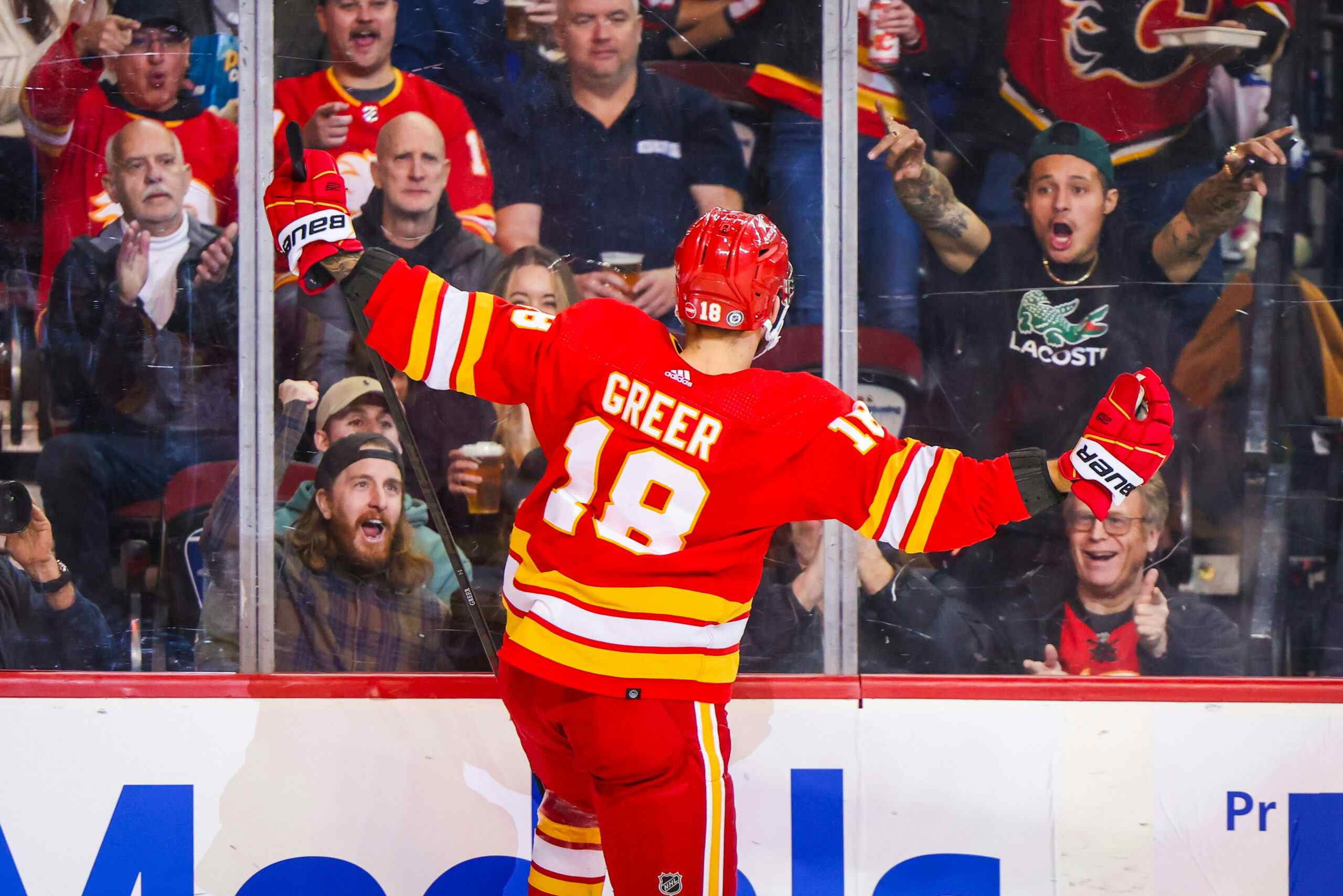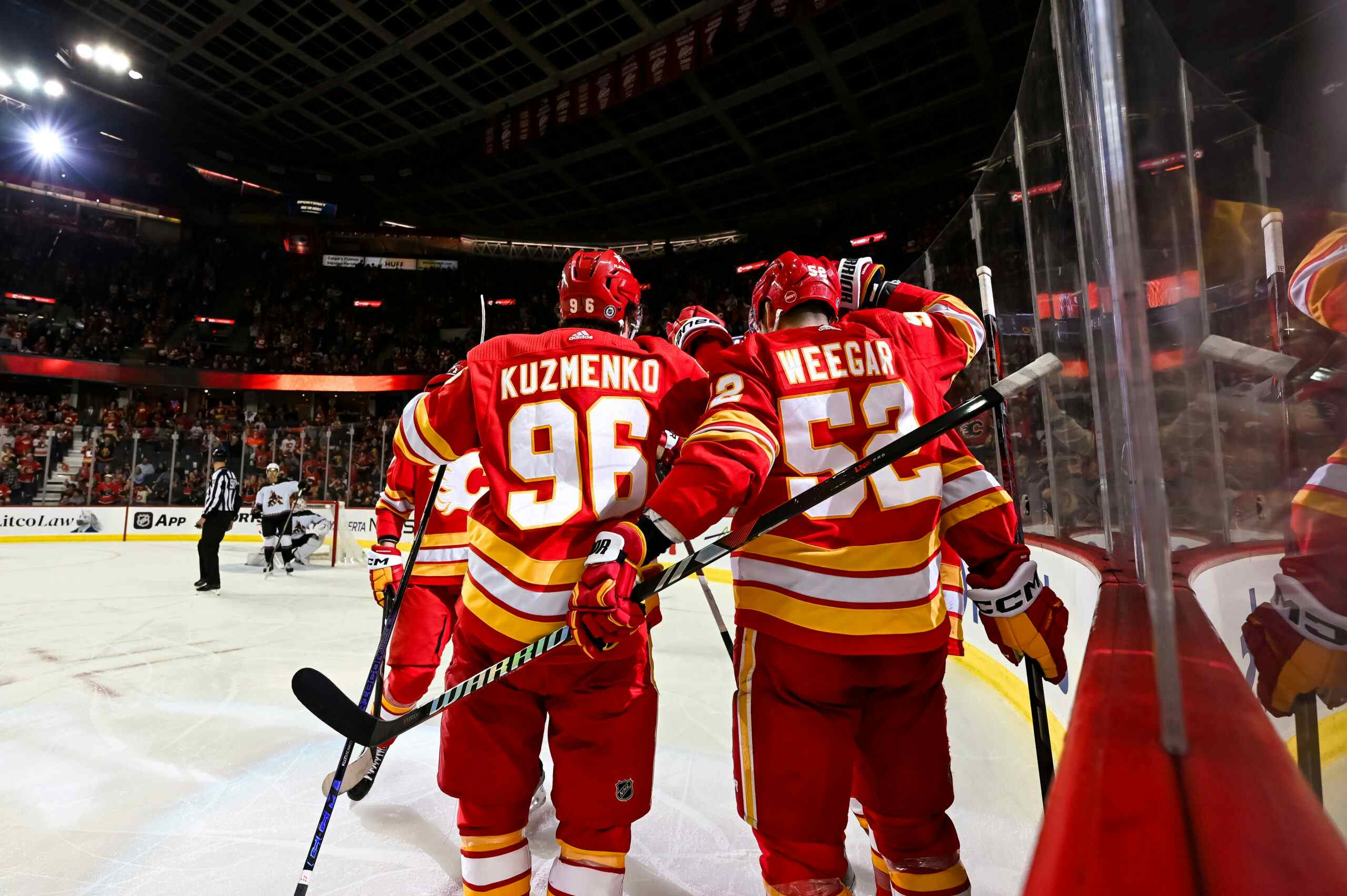Does “buying UFA years” drive up cap hits?
By Ryan Pike
7 years agoOne common phrase that’s popped up during the interminable wait for the contract extensions for Calgary Flames wünderkinds Johnny Gaudreau and Sean Monahan is “buying UFA years.” The concept is this: in a player’s first contract after their entry-level deal there are two kinds of deals, short-term “bridges” and long-term deals. The theory is that as a contract goes longer and stretches into the years in which that player would otherwise be an unrestricted free agent (UFA), the deal’s cap hit will go up.
But is that what actually happens? And more precisely, does the number of UFA years covered in a post entry-level deal make much of a difference?
DEFINING UFA YEARS
Under the terms of the CBA (Article 10), a player’s UFA years begin either when (a) a player has turned 27 as of June 30 of the league year (e.g., they’re 27 when the “league year” begins on July 1), or (b) they’ve played seven “accrued seasons.”
An “accrued season” is one where a player is on a team’s active roster for 40 games or more. So in essence, you become a UFA once you’ve been in the league for seven seasons.
Under the CBA, Gaudreau has two accrued seasons and Monahan has three, so a five-year contract brings Gaudreau to his UFA years and a four-year deal does that for Monahan.
SOME COMPARABLES
For comparables, I made a list of players from the 2010, 2011, 2012 and 2013 NHL Drafts who had a points-per-game of .550 or higher during their entry-level contracts. Admittedly, this will create some boundaries to this discussion: we’d probably get more robust findings regarding relationships if we expanded things to all players coming out of entry-level deals OR to all players about to have UFA years bought in a deal, but since I wanted to focus on players who were in similar circumstances to Gaudreau and Monahan, I capped it at the players you see here.
ELC PPG = Entry-Level Contract Points-Per-Game
Years Bought = UFA Years Covered By The Second Contract
Post-ELC Cap Hit = Average Annual Value of The Second Contract
| Player | ELC PPG | Years Bought | Post-ELC Cap Hit |
| Taylor Hall | 0.848 | 3 | $6 million |
| Vladimir Tarasenko | 0.754 | 4 | $7.5 million |
| Filip Forsberg | 0.746 | 2 | $6 million |
| Ryan Nugent-Hopkins | 0.725 | 3 | $6 million |
| Nathan MacKinnon | 0.702 | 3 | $6.3 million |
| Gabriel Landeskog | 0.673 | 3 | $5.571 million |
| Ondrej Palat | 0.663 | 0 | $3.333 million |
| Jeff Skinner | 0.658 | 1 | $5.25 million |
| Mark Scheifele | 0.646 | 4 | $6.125 million |
| Aleksander Barkov | 0.623 | 2 | $5.9 million |
| Brandon Saad | 0.612 | 2 | $6 million |
| Tyler Seguin | 0.596 | 2 | $5.75 million |
| Jonathan Huberdeau | 0.577 | 0 | $3.25 million |
| Brendan Gallagher | 0.560 | 2 | $3.75 million |
| Mikael Granlund | 0.557 | 0 | $3 million |
RESULTS
I did two sets of charts: one set with all the players included, and one that threw out the players that were on shorter-term “bridge” deals (e.g., the players who didn’t have UFA seasons covered in their second contract, such as Palat, Huberdeau and Granlund).
POINTS PER GAME & CAP HIT:
Pure points production during the entry-level years is expected to have a linear relationship with the cap hit in the second contract. And lo and behold, it does. For reference, Gaudreau’s production was 0.894 points-per-game – better than anyone else in this comparison group – and Monahan’s is 0.671 points-per-game.

(Above: “bridge” players included.)

(Above: bridge players excluded.)
Looking at the two charts, you can sort of explain the outliers: the “bridge deals” are underpaid under the model, but likely because the sales pitch from management was to take less now so they could cash in after the bridge deal. Tarasenko’s $7.5 million deal and Hall’s $6 million deal are also outliers, but both can be explained situationally: Tarasenko was an effort to lock him in long-term (he signed away four UFA years), while Hall’s was an effort to keep Edmonton’s young core together with identical deals. Based on the model, though, Hall left nearly a million dollars (per season) on the table.
UFA YEARS “BOUGHT” & CAP HIT:

(Above: “bridge” players included.)

(Above: “bridge” players excluded.)
Again, we see linear patterns whether or not the bridge players are included. The R-squared is much stronger with the bridge deals included than without them, which intuitively makes sense because (a) players on bridge deals tend to have lower cap hits and (b) the players who you’re signing longer term tend to get higher cap hits regardless of the overall length of the deals. Removing the players that, by definition, have lower cap hits (the bridge players) would logically weaken the relationship.
The big outlier here, either way, is Brendan Gallagher’s deal in Montreal (by over a million bucks per year based on how many UFA years are being bought).
CAP HIT PREDICTIONS
Each sample produced an equation that would, in turn, produce a prediction of what a player’s cap hit should be. As you’d expect, the production-based predictions are a bit more nuanced than the UFA years-based predictions.
Production-Based:
Based on their points-per-game during their entry-level contracts, Gaudreau would be expected to net $7.67 million (bridges included) or $7.13 million (bridges excluded). Monahan would net $5.4 million (bridges included) or $5.8 million (bridges excluded).
The nice thing about production-based cap predictions is you don’t really need to guess how long the deal is – though there would inevitably be variation based on deal length and other factors.
UFA Years-Based:
Zero Years: $3.54 million (bridge deals)
One Year: $4.4 million (bridges included) or $4.96 million (bridges excluded)
Two Years: $5.26 million (bridges included) or $5.52 million (bridges excluded)
Three Years: $6.12 million (bridges included) or $6.08 million (bridges excluded)
Four Years: $6.97 million (bridges included) or $6.63 million (bridges excluded)
The years-based approach isn’t awful, but there doesn’t seem to be a lot of nuance to it; under these premises, the only thing determining Gaudreau and Monahan’s cap hit would be the length of the deals, whereas if one or both did end up signing bridge deals it’s unlikely that either would be anywhere near $3.54 million.
SUM IT UP
Yes, it appears that the length of the deal matters in the context of big money second contracts. But compared to the relationship between a player’s point production and their cap hit, the impact of the contract’s length is much less intuitive and subject to “wobbles” depending on the cases you decide to include. Note that when we got rid of the bridge deals when looking at point production, the R-squared didn’t really change all that much, suggesting a much more resilient relationship. If we drastically expanded the cases we looked at, I don’t think the point production chart would look all that different, but I’m not nearly as sure about the “years bought” chart because of the wobble we already saw.
Based on what the data tells us, production levels alone should bring Gaudreau’s cap hit to around $7 million and Monahan’s to around $6 million. Based on the impact that buying UFA years seems to have, any deal that eats up more than one season of free agency for either player probably takes on at least a few hundred thousand dollars to the mix.
Recent articles from Ryan Pike





